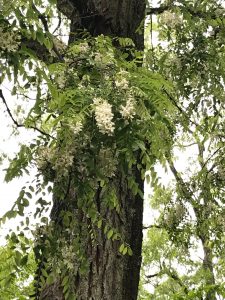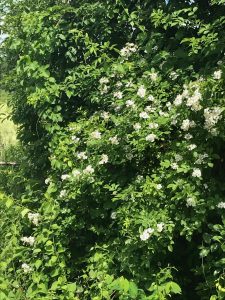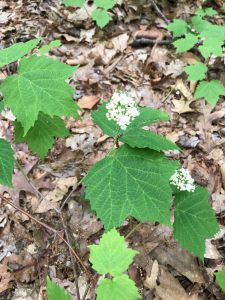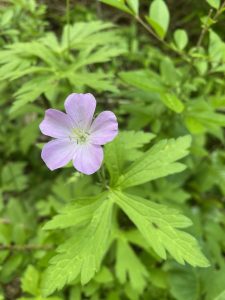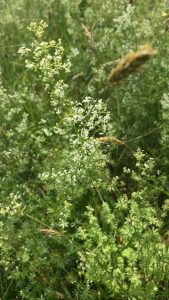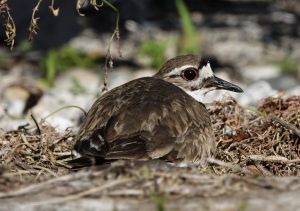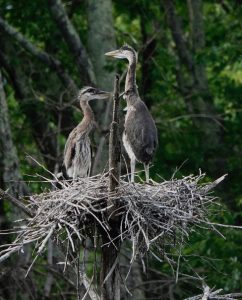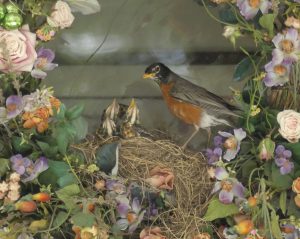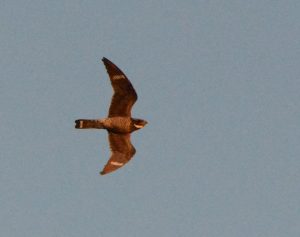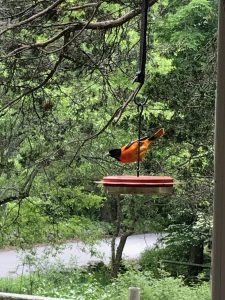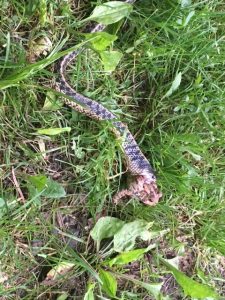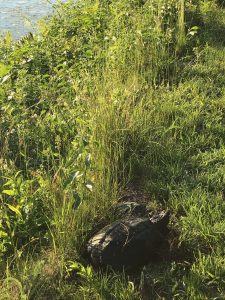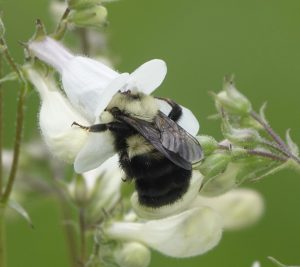Written by Gwyn Loud for the Lincoln Land Conservation Trust. She welcomes your sightings and questions at 781-259-8690 or gwynloud555@gmail.com.
Summer arrives officially on June 20, the solstice, but we have already had a taste of the new season. The last week of May included days in the nineties, followed by a very chilly wet Memorial Day weekend, leading people to turn on the heat and light their wood stoves. Then came a heat wave of several uncomfortably hot humid days with temperatures over 90.
At least the rain at the end of May brought welcome relief to the plant world after weeks of drought; Metro West got 5.51 in. of rain for the month, above the average of 4.04 in. After a hot dry period in early June, steady soaking rain fell overnight on June 11, welcomed by gardeners and farmers. Climate change is with us and we can each take steps in our own lives to make a difference. For example, we can mow our lawns less often and, even better, convert some lawn area to meadow, with flowers to attract pollinators.

Although it is wonderful that the shrubs and trees have bloomed profusely this spring, the trade-off is that they have coated everything with pollen, and caused sneezes. Horse chestnut and black cherry trees flowered heavily and, for the first time in several years, black locust trees bloomed. Corey Nimmer found a good number of young American chestnut trees in woods near the Lincoln Cemetery and wrote, “I walked through with Mark Meehl who is heading an effort by the American Chestnut Foundation to plant American chestnut seedlings in the area at the top of the Flint Hayfields (formerly the Turtle Creek vineyard) and he said we have a real hotspot for healthy American chestnut trees and that he wants everyone in Lincoln to be on the lookout for a flowering tree.”
Honeysuckle and multiflora rose produced fragrant blossoms, and along roadsides look for greater celandine (yellow), wild geranium (pink) and white or magenta dame’s rocket, which is invasive and probably a garden escapee. In the woods one can spot maple-leaved viburnum in flower and I was thrilled to come across beautiful pink azaleas blooming by one of the ponds at Mt. Misery. Buttercups and hawkweed dot lawns with gold, and tufted vetch, and both white and red clover add color to fields. Bedstraw seems to be taking over some fields, such as Browning North and South. A type of bedstraw called cleavers is spreading on my property; it feels almost sticky and twines around other plants like a vine. Luckily, it is easy to pull.
Many birds are now into second broods, although baby birds have a precarious life. According to Mass Audubon, “Only 30% of young songbirds survive their first year of life. This is nature’s way of maintaining population sizes that the environment can support.” This month recently-fledged birds can be seen and heard begging from their parents. A “family picnic” of raucous common ravens was especially noisy. Sadly, the bald eagle chick in a nest near Fairhaven Bay died after only five days. Various observers have found nests destroyed or eggs taken, including the nest of the leucistic robin along Canaan Drive, reported in the May column. Killdeer, in the plover family, nest right on the bare ground and can be seen in Flints’ Field, Boyce Field, and Farm Meadow (inside the septic system area). Fortunately, the farmers watch for them and try to avoid harming the nest. The pair of pileated woodpeckers nesting along Conant Rd. is busy feeding young in their cavity high in a dead white pine trunk. Bobolinks are nesting in Farm Meadow, and it’s likely that red-breasted nuthatches, a species which usually breeds farther north, are nesting in the woods by Farrar Pond. Likewise, since a black-and white warbler and American redstart were heard singing recently on the Drumlin, they too may be nesting here. Species of warblers which always breed in Lincoln include pine, common yellow-throat, and yellow. Great blue herons have two chicks in their nest high in a dead tree in the marsh west of St. Anne’s and the red-tailed hawk nest right over Codman Rd. by the police station has at least one chick. All the white droppings on the road are a great clue as to the nest location (but don’t stand below too long!).
Those of us continuing to feed birds enjoy watching summer residents such as rose-breasted grosbeaks, gray catbirds, Eastern bluebirds, and families of “regulars,” eating seeds, mealworms, or suet. Sugar-water feeders attract ruby-throated hummingbirds, but other species such as Baltimore orioles and downy woodpeckers often visit for a sweet sip. As always, it is important to provide water for birds to bathe in or drink. One observer enjoys watching a house wren taking dust baths in a patch of dry dirt.
Other notable avian reports include several common loons calling regularly on Walden Pond and Flint’s Pond- perhaps the same birds going back and forth. A birder found a willow flycatcher in the back marsh in Browning North and one evening at dusk common nighthawks were swooping over Farrar Pond catching insects on the wing. They used to be seen in the lights over Fenway Park and nested on gravel-topped roofs in the city. Roofing materials have changed, however, and no breeding nighthawks were confirmed in the most recent MA Breeding Bird Atlas. During an outdoor fitness class I spotted a green heron land by Pierce Pond and several times have heard a blue-winged warbler sing from a brushy field along Conant Rd. Reports from Drumlin Farm include an osprey and pair of broad-winged hawks, a juvenile hairy woodpecker, an indigo bunting, orchard orioles, bobolinks, scarlet tanagers, and warbling vireos.
We have recently been treated to choruses of gray tree frogs, and the deep jug-a-rum of bullfrogs is a sure sign of summer. Observers report seeing garter snakes and milk snakes. As mentioned last month, this is a season when turtles are nesting, and may be crossing roads to get to a place to dig a nest. Please watch for them and, if you need to help a snapping turtle across the road, do not pick it up by the tail or get your hands near its head (see link below).
Mammal families are all round us, and chipmunks seem especially numerous. Voles, shrews, rabbits, fishers, coyotes, deer, and woodchucks have all been sighted, and people have noted more bats this year than last. A dead beaver was found on Old County Road.
Insects, a crucial part of the food chain are increasingly apparent as the warm season progresses. We may not like insects such as black flies, but they actually have an ecosystem role! Butterflies are in evidence now, and an observer reported seeing two monarchs. Watch for fireflies flashing their signals over fields or in the woods. As we learn about wild pollinators and their importance, we become more observant of various species of wild bees. Please stop by the newly-planted pollinator gardens around town such as the one on Rt. 117 by the trail entrance to Stony Brook South/Harrington, and watch pollinating insects in action.
Looking skyward, June 24 will bring us the third and last super moon of 2021. This full moon was called the Strawberry Moon by early Native American tribes because it coincided with the time to gather ripening fruit. The full moon may look larger and brighter than usual as it will be almost at its closest to Earth.
Related links:
What to do if you find a baby bird out of the nest


